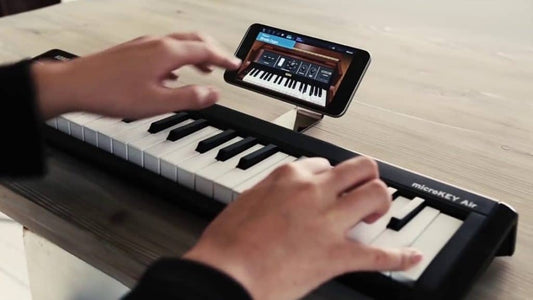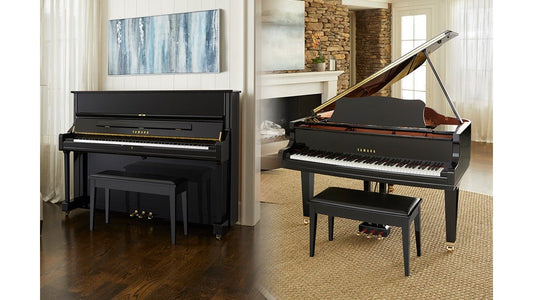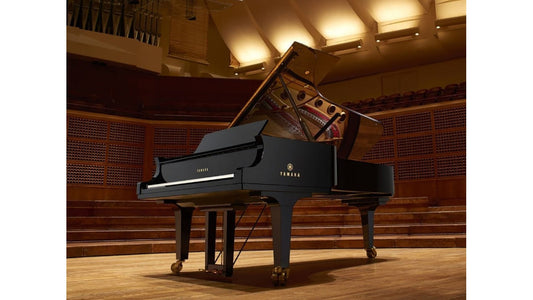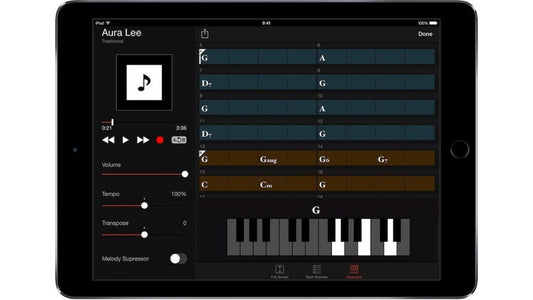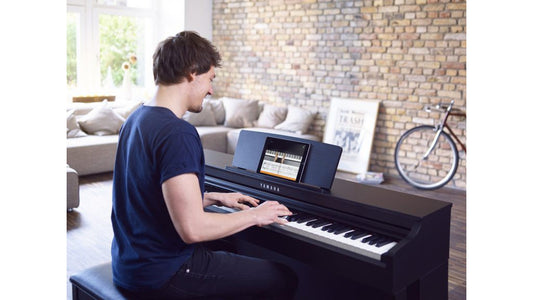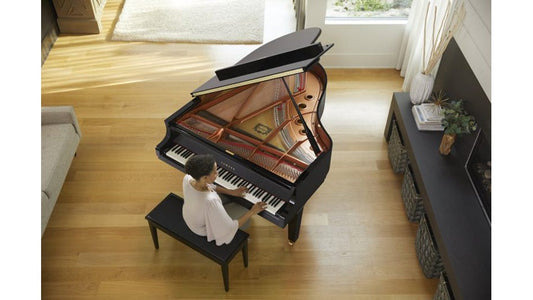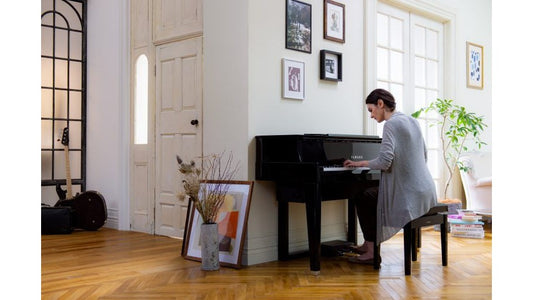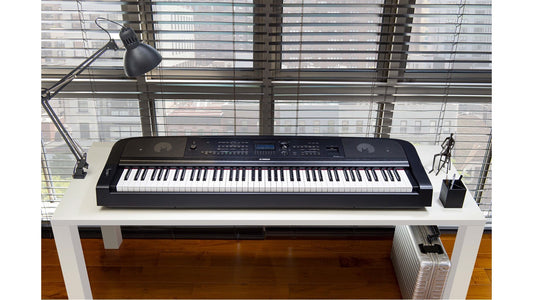
Sự Khác Nhau Giữa Đàn Piano Cơ và Piano Điện
Đàn piano cơ (piano acoustic) đã thay đổi rất ít so với nhạc cụ của thời Cristofori - có một số thay đổi về độ dài phím, cảm giác búa và những thay đổi về mặt thẩm mỹ đối với việc chế tạo hộp đàn. Tuy nhiên, đàn piano điện đã trải qua một sự thay đổi lớn nhờ vào các phím có trọng lượng, nhịp cải tiến và các công nghệ sẵn có để giúp chơi tiếp tục thú vị, vui vẻ và đầy động lực học tập.
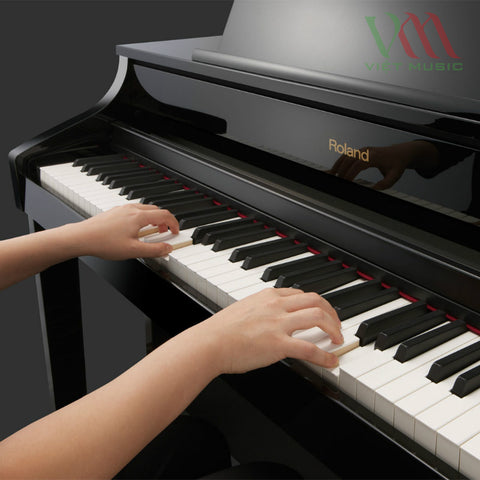
Cho dù bạn là một người chơi đàn nâng cao, một người mới bắt đầu hoàn chỉnh cơ bản hay một bậc cha mẹ đầu tư vào một cây đàn piano cho con mình, việc hiểu rõ sự khác biệt giữa âm thanh và hình dáng có thể giúp bạn đưa ra quyết định sáng suốt.
SỰ KHÁC BIỆT GIỮA ĐÀN PIANO CƠ VÀ ĐÀN PIANO ĐIỆN
Đàn piano cơ tạo ra âm thanh với búa bọc nỉ đánh vào dây thép. Một cây đàn piano điện không sử dụng búa; thay vào đó, nó có loa điện tử để phát lại các bản ghi âm (demo) chất lượng cao được lấy từ những cây đàn piano cơ tốt nhất.
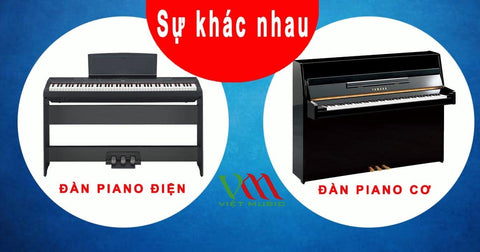
Cảm ứng của một cây đàn piano rất quan trọng đối với người chơi. Chơi trên các phím cứng có thể gây khó chịu và còn hay bị những tiếng cộc cộc phát ra từ bàn phím còn các phím quá nhẹ gây cảm giác bị “hẫng tay”. Thường thì những cây đàn piano điện cũ sẽ gặp những trường hợp phím như thế. Tuy nhiên thì đàn piano điện bây giờ đã được cải tiến rất nhiều về chất lượng phím, tình trạng đó hầu như không còn gặp ở những cây đàn piano điện mới.
Đàn piano điện có thể mô phỏng các phím có trọng lượng của âm thanh với búa đàn liền mạch giống như thật. Thậm chí còn có tùy chọn trên một số đàn piano điện để điều chỉnh độ nhạy cảm ứng của các phím cho phù hợp với sở thích của người chơi. Độ nhạy cảm ứng thấp có nghĩa là người chơi phải nhấn các phím mạnh hơn để làm cho chúng to hơn. Độ nhạy cảm ứng cao có nghĩa là bạn không cần phải ấn mạnh để có cùng một kết quả lớn.
Đàn piano điện có tích hợp nhiều loại âm thanh của nhiều nhạc cụ khác nhau để bạn có thể thay đổi phong cách chơi cũng như thay đổi tiếng để hợp với màu sắc bài nhạc. Việc thay đổi âm thanh đàn organ nhà thờ hoặc đàn harpsichord đơn giản: chỉ bằng một nút bấm. Một số đàn piano điện cho phép bạn tách bàn phím để một âm thanh nhất định được phát ở dưới cùng với âm thanh khác ở trên cùng. Điều này có thể tạo ra một màn trình diễn đa dạng và biểu cảm hơn, và người học thường có trải nghiệm thú vị với âm thanh.
BẢO QUẢN ĐÀN PIANO CƠ VÀ PIANO ĐIỆN
Khi chọn một cây đàn piano cho ngôi nhà của bạn, điều quan trọng là phải nghĩ đến nơi cất giữ nó. Đàn piano cơ cần được đặt trong phòng có nhiệt độ không dao động vì những thay đổi về độ ẩm có thể ảnh hưởng đến việc điều chỉnh dây.
Mặt khác, một cây đàn piano điện không cần điều chỉnh hoặc bảo trì nên có thể được đặt trong bất kỳ phòng nào bất kể nhiệt độ như thế nào. Tính di động của nó có nghĩa là bạn có thể di chuyển hoặc di dời nó mà không gặp quá nhiều rắc rối. Đàn piano cơ thường rất nặng nên có xu hướng cố định ở một chỗ.
Kích thước đàn piano điện:
Có nhiều model của nhiều hãng đàn khác nhau, tuy nhiên kích thước thay đổi không hề lớn.
VD. Đàn piano điện Roland RP-102 có kích thước:
- Chiều rộng: 1,379 mm
- Chiều cao: 977 mm
- Chiều sâu: 413 mm
- Trọng lượng: 37,8kg
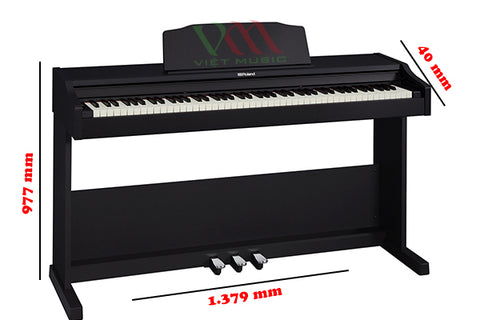
VD2: Kích thước Đàn Piano Điện Yamaha
- Chiều rộng: 1,326 mm
- Chiều cao: 145 mm
- Chiều sâu: 295 mm
- Trọng lượng: 11,5kg
Kích thước đàn piano cơ:
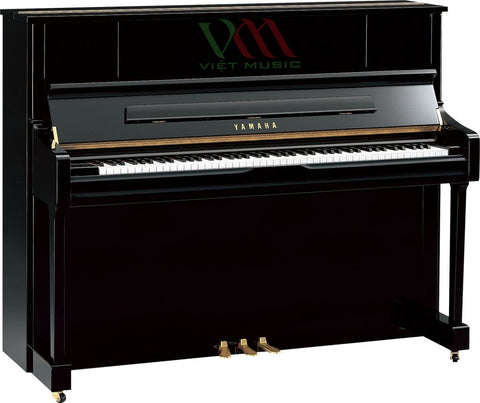
Kích thước trung bình của đàn piano cơ upright có:
- Chiều cao khoảng 90 – 152cm
- Chiều rộng là 147cm
- Chiều dài: 131cm
- Trọng lượng: 265kg
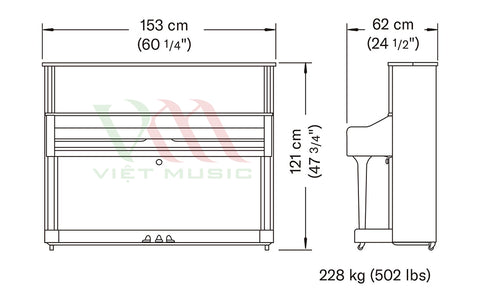
SỬ DỤNG TAI NGHE CHO THỜI GIAN CHƠI KHÔNG GIỚI HẠN NGÀY HOẶC ĐÊM (chỉ làm được ở piano điện)
Kết nối tai nghe trên đàn piano điện loại bỏ bất kỳ hạn chế nào khi cố gắng chen chúc trong một số buổi luyện tập vào sáng sớm hoặc tối muộn. Cắm một bộ tai nghe mang lại âm thanh trực tiếp và tức thì, đồng thời tạo sự tự tin bằng cách chơi riêng tư. Nó cũng giữ cho gia đình, bạn bè và hàng xóm bình yên, khi mà bạn không muốn làm phiền tới họ. Một số đàn piano điện có hai ổ cắm tai nghe để bạn có thể chơi riêng với bạn bè hoặc cùng với một gia sư để phân tích, khen ngợi và thưởng thức bản nhạc của bạn.
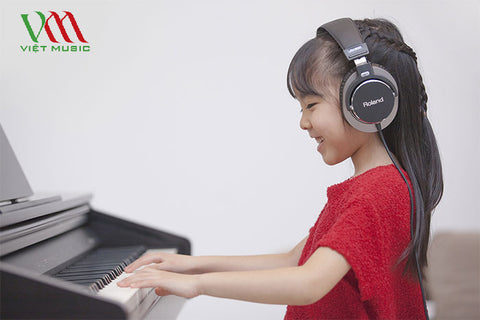
GIỮ ĐƯỢC ĐỘNG LỰC TRONG THỜI GIAN THỰC HÀNH
Mọi người đều trải qua sự sụt giảm động lực, cho dù bạn đã chơi nhiều năm hay mới bắt đầu học dưới sự hướng dẫn của một giáo viên. Đây là nơi mà một cây đàn piano điện thực sự có thể trở thành của riêng nó. Đàn piano điện có khả năng kết nối với iPad / iPhone và sử dụng một loạt ứng dụng để khuyến khích luyện tập. Cho dù thật dễ dàng để học các trò chơi ghi chú, bản nhạc kỹ thuật số hoặc hướng dẫn trên màn hình để cải thiện hành động của bàn tay và ngón tay, thường có một ứng dụng để trợ giúp và cải thiện hiệu suất của bạn. Máy đếm nhịp có sẵn trên một cây đàn piano điện là một điều may mắn khi học một bản nhạc mới hoặc giải quyết việc thị tấu trong thời gian mới học. Nó giúp cải thiện kỹ năng nhịp nhàng và phát triển thời gian bên trong của bạn. Ngoài ra, bạn có thể sử dụng chức năng ghi âm và nghe lại màn trình diễn của mình - đây là một cách tuyệt vời để phân tích và cải thiện.
TÓM LẠI SỰ KHÁC BIỆT CHÍNH GIỮA PIANO CƠ VÀ PIANO ĐIỆN
Điều chỉnh: Đàn piano cơ cần điều chỉnh thường xuyên cũng như bảo dưỡng và sửa chữa chung. Đàn piano kỹ thuật số không yêu cầu điều chỉnh. Không gian: Đàn piano cơ lớn hơn piano điện và cần nhiều không gian hơn để có được âm thanh tối ưu. Tính di động: đàn piano kỹ thuật số thường có trọng lượng nhẹ hơn và có thể di chuyển và vận chuyển mà không gặp chút rắc rối nào. Công nghệ: đàn piano điện tích hợp các tính năng cho phép thử nghiệm khi chơi, có thể là động lực để luyện tập và cho phép người chơi khám phá sáng tác và ghi âm Tính linh hoạt: đàn piano cơ chỉ cung cấp một âm thanh; một cây đàn piano kỹ thuật số mang đến cho bạn nhiều sự lựa chọn về piano và các nhạc cụ khác
